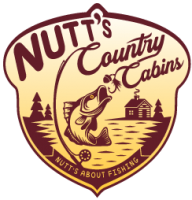Questions? Call 1-844-905-1001
Northern Pike

Northern Pike (Esox Lucius) gets its common name from its resemblance to the pole-weapon known as the pike. Variations of common names referring to this fish are; Great Northern Pike, Lakes Pike, Snot Rocket, Slough Shark, Snake, Slimer, Slough Snake, Northern, Pike, Gator (due to a similar head shape of an alligator), Jack, Jackfish, Hammer Handle, Lucy, Long Head and Pointy Nose. For most it is commonly referred to as Pike or Northern. This species of carnivorous fish are typically found in brackish and freshwaters of the Northern Hemisphere including Russia, Europe and North America. The Northern Pike are members of the Esocidae fish family much like the Muskellunge.
Their looks are similar to their cousins, the Muskellunge, as being a member of the Esocidae family they share similar features such as a long, sleek, elongated body with a broad, flat mouth resembling a duck's bill, and a single dorsal fin located on the posterior portion of the body. Dark spots on the fins, and at times the fins can have a reddish hue. The Northern Pike can be distinguished from its relatives by three main features. The first most noticeable is the color markings against a dark green on their backs gradually lightening down the sides to a yellowish or white underside with the sides of the fish covered with lighter yellow to white colored oblong horizontal spots or streaks. Whereas all other species in the Escocidae family have darker markings than the background color. The second difference is the scalation pattern on the gill cover and cheek. In the northern pike the cheek is fully scaled, but the bottom half of the gill cover is scaleless. In the larger muskellunge, both the bottom half of the gill cover and the bottom half of the cheek are scaleless. The third difference is the number of pores under each side of the lower jaw; usually 5 in the northern pike (rarely 3, 4 or 6 on one side), 6 to 9 in the muskellunge (rarely 5 or 10 on one side). Other characteristic of the Northern Pike are the tips of the tail fin are more rounded than a Muskellunge, and they have bright yellow eyes with rows of razor-sharp teeth. Young pike have yellow stripes along a green body which later the strips divide into light spots.
As Northern Pike grow longer, they increase in weight and the relationship between length and weight is not linear, which is the same for Muskellunge. Their average length ranges from 45-75 cm (18-30 inches) and weights between 0.9 – 4.3 kg (2 to 9.5 pounds). The maximum recorded lengths of up to 150 cm (59 inches) and published weight of 28.4 kg (63 pounds). The Ontario record caught for this fish weighted 19.1 kg (42 pounds). The International Game Fish Association (IFGA) currently recognizes a 25 kg (55 lb) Pike caught in Germany on 16 October 1986, as the all-tackle world-record Northern Pike. The average life span of Northern Pike ranges from 24 – 30 years.
Northern Pike thrive in clear, shallow waters of lakes and large rivers with plenty of vegetation. They tend to occupy the shallow waters near the shore with covering where they lie in wait for their prey, holding perfectly still for long periods before they strike with precision and acceleration. They can be found in weedy lakes, rocky waters, vegetated bays, creek mouths and shoals of lakes where they can ambush prey. They prefer cool waters and therefore will head into deeper water around mid summer to avoid higher water temperatures. They inhabit any water body that contains fish, but also suitable for spawning. They have a cannibalistic nature and are relatively aggressive species with regards to feeding as when food is scarce, they turn on smaller Pike to feed on. Aggressiveness also comes from not given enough space because of their territorial nature. Cannibalism is more common in cool summers for the upcoming Pike having slow growth rates in that season and might not be able to reach a size to deter the being a meal for a larger Pike. The Northern Pike is a largely solitary predator. It migrates during a spawning season and it follows prey fish like common reaches to their deeper winter quarters. Sometimes you can observe groups of similar-sized pike that cooperate to start hunting at the same time, known as “wolfpack” theory. Large Pike cruise large bodies of water in pursuit of schools of prey fish. Smaller pike are more of an ambush predator due to their vulnerability to cannibalism.
Lake fishing for Pike from the shore is especially effective during spring, when the big pike move into the shallows to spawn in weedy areas, and later many remain there to feed on other spawning coarse fish species to regain their condition after spawning. Smaller Pike often remain in the shallows for their own protection, and for the small fish food available there. For the hot summer and during inactive phases, the larger female Pike tend to retire to deeper water or places with better cover. This gives the boat angler good fishing during the summer and winter seasons. Trolling is a popular technique.
The use of float tubes has become a very popular way of fishing for Pike on small to medium-sized still waters. Fly fishing for Pike is another eligible way of catching these fish, and the float tube is now recognized as an especially suitable watercraft for Pike fly-fishing. Also, they have been caught this way by using patterns that imitate small fry or invertebrates.
Some anglers release pike they have caught because the flesh is considered bony, especially due to the substantial "Y-bones". It is a highly valued skill to de-bone this fish. In recent decades, more Pike are released back to the water after catching, but they can easily be damaged when handled. Handling those fish with dry hands can easily damage their mucus-covered skin and possibly lead to their deaths from infections.
Since they have very sharp and numerous teeth, care is required in unhooking a pike. Barbless trebles are recommended when angling for this species, as they simplify unhooking. This is undertaken using long forceps, with 30-cm artery clamps the ideal tool. When holding the Pike from below on the lower jaw, it will open its mouth. It should be kept out of the water for the minimum amount of time possible and should be given extra time to recover if being weighed and photographed before release. If practicing live release, calling the fish "caught" when it is alongside a boat is recommended. Remove the hook by grabbing it with needle-nosed pliers while the fish is still submerged and giving it a flip in the direction that turns the hook out of the mouth. This avoids damage to the fish and the stress of being out of water.
Angling tips for fishing Northern Pike
Best time to fish for Pike is in the morning or evening when the baitfish activity is high. Use a medium-action rod and reel and strong leaders to prevent the Pike’s sharp teeth from biting through the line. Pike will take any live or artificial bait, including large streamer flies. Common baits used are spoons, in-line spinners, crankbaits, spinnerbaits, buzz baits, topwater lures, and large live baits such as chubs, suckers and shiners. However, monster Pike are usually caught by trolling with large spoons, plugs or natural baits.
Here at Nutt’s Country Cabins we are in Zone 4 in Ontario where you can fish for Pike all year long. Please check out the fishing regulations for slot sizes for this areas as well as any updates to the fishing regulations for this fish before your trip at www.ontario.ca/fishing
Wind: 13mph SW
Humidity: 73%
Pressure: 29.67"Hg
UV index: 0
64°F / 43°F
46°F / 34°F
Nutt's Country Cabins, 2076 Highway 664, Sioux Lookout, ON P8T 0A7
Copyright © 2019 NuttsCountryCabins.com | Privacy Policy | Website design by: Little Dragon Media

